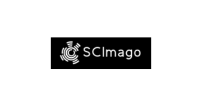Side-resistance to macrolactones in cattle nematodes
DOI:
https://doi.org/10.5380/avs.v11i1.5628Keywords:
bovinos, nematodas, lactonas macrocíclicas, resistência lateral, cattle, nematodes, macrocyclic lactones, side-resistanceAbstract
Cattle ranches in Rio Grande do Sul (RS), are predominantly extensive and the control of gastrointestinal nematodes relies on the continuous usage of anthelmintic drugs. Macrocyclic lactones (MLs) are the most frequently used products. There have been reports of anthelmintic resistance from gastrointestinal parasites in RS. The objective of this work was to determine the efficacy of 10 commercially available MLs in naturally infected cattle. A total of seventy Nelore and Charolais of abaut one year old and their crosses were studied. Each group (n=7) was treated with: doramectin 1% (Dectomaxâ, Pfizer), moxidectin 1% (Cydectinâ, Fort Dodge), four ivermectin 1% (Ivermectinaâ, Ouro Fino; Ivermectinaâ, Jofadel; Imectinâ, Irfa; Dectiverâ, Lapisa); ivermectin 3.1% (Ivomec Goldâ, Merial), two abamectin 1% (Abamectinaâ, Jofadel; Abactinâ, Biofarm), and the combination ivermectin 2.25% plus abamectin 1.25% (Solutionâ, Intervet) at their recommended doses. Fecal samples were collected at 0, 7, 14 and 21 days postreatment for the fecal egg count reduction test (FECRT) and larval culture, using modified RESO analysis. At 21 days after treatment overall efficacy was 0, 0, 19, 89, 30, 13, 27, 0, 0, and 67% respectively. Trichostrongylus sp. and Cooperia sp. have shown resistance to all products. Although, ivermectin 3.1% nor the combination ivermectin plus abamectin were used previously against this parasite population, the data confirm the deep development of side-resistance between MLs in the most important cattle nematodes.
Downloads
How to Cite
Issue
Section
License
Authors that wish to publish in AVS agree with the following conditions:
- To keep copyright of the article and allow the AVS to publish the first time. The article will be licensed by Creative Commons - Atribuição 4.0 Internacional allowing the sharing of their work.
- Authors may distribute their work by other channel of distribution (ex.: local or public repository).
- Authors have the permission to publish their work online, using different channels (similar to above), even before the final editorial process.













